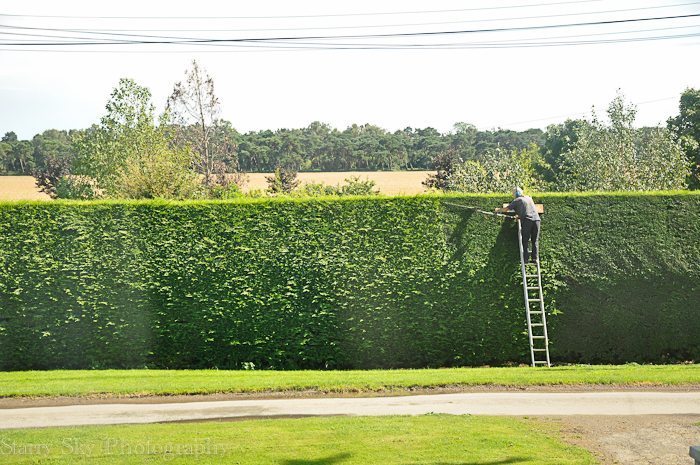by Frank Moss
Once again, we talk a lot about protection for your home. You can be good with a gun and great on the bench press, but are you good with protecting what you worked hard for?
There are many reasons to plant a hedge row instead of building a fence such as:
- Using thorny plants such as Firethorn (Pyracantha coccinea) can be a security feature
- In most cases you do not need a building permit like you do with a fence
- You can leave the public side untrimmed for a more covert appearance
- With the right plants they attract wildlife like rabbits
- Plants create oxygen and abate runoff
- Plants are cheaper to buy and install yourself
 Step 1
Step 1
The first thing to do is map out where your hedge row will be using posts and string or landscaper’s ribbon. Be sure to leave the stakes and ribbon in place when done with the trenching. Trench the row where you wish your hedge to be. For single depth hedges, which will be approximately 3-4′ deep when grown and trimmed, the trench should be ~2′ wide. If you are planting a double hedge you will need to increase the width of the trench to ~3′ wide. Simply pale the soil to the downhill side of the trench and remove weeds and large stones.
Step 2
Aerate and brake up the soil in the bottom of the trench using your tilling fork. Do not forget to breakup the soil you removed from the trench also. Using one of your started hedge plants, make sure that the trench is deep enough so that there is enough room for a couple of inches of farm manure or compost to go underneath the plants and that the soil is level with the top of the plant’s root ball. Stick to this depth as you do not want to have to replace any hedge plants. Add a layer of manure or compost to the bottom of the trench and mix it in with the removed soil. Make sure the manure/compost at bottom of the trench is even and level.
Step 3
When planting use the ribbon to make sure each plant is even with ones next to it. Correct spacing for Firethorn is ~2′-3′ apart. Return the soil you removed from the trench firming around the base of the plants with your feet to remove any air pockets and give the plants a firm holding. Now is a good time for slow release fertilizer to be added and mixed into the soil being added back.
Step 4
Clean and rake around the hedges, moving dirt and fallen leaves into the trenched area. A soaker hose placed on the inside side of the hedge row will help tremendously with watering for the first month or so as the hedge takes root in it’s new home. This can also be set with a timer for 15 minutes of watering twice a day.

The nineteenth century Great Hedge of India was probably the largest example of a hedge used as a barrier. It was planted and used to collect taxes by the British.
The Willow Palisade, constructed during the early Qing Dynasty (seventeenth century) to control people movement and to collect taxes on ginseng and timber in southern Manchuria, also had hedge-like features. The palisade included two dikes and a moat between them, the dikes topped by rows of willow trees, tied to one another with their branches. Gradually decaying throughout the late eighteenth and nineteenth centuries, the palisade disappeared in the early twentieth century, its remaining willows cut during the Russo-Japanese War of 1904-05 by the two countries’ soldiers.
The Meikleour Beech Hedges, located near Meikleour in Scotland, are noted in the Guinness World Records as the tallest and longest hedge on earth, reaching 30 metres (98 ft) in height and 530 metres (0.33 mi) in length. The beech trees were planted in 1745 by Jean Mercer on the Marquess of Lansdowne‘s Meikleour estate.


